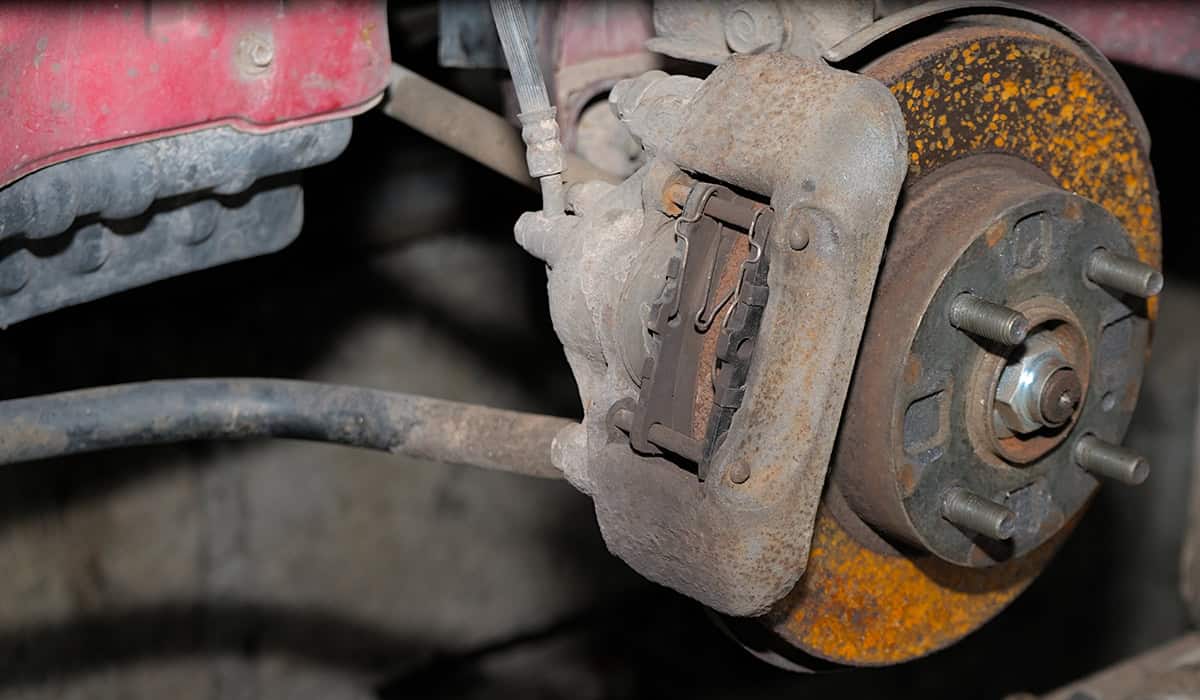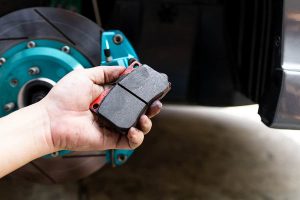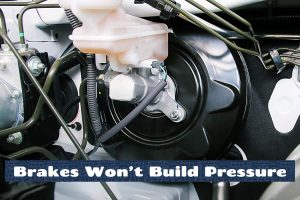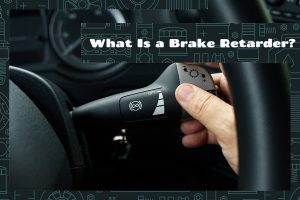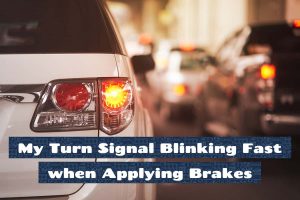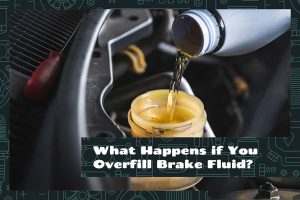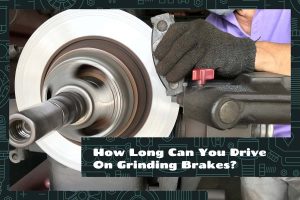Brake lines carry vital fluid to the brakes, allowing your car to slow down or stop. However, like everything else in your car, they can get damaged or fail over time. Recognizing the signs early can prevent accidents and costly repairs, helping to keep you safe on the road.
Some common signs of damaged or failing brake lines are:
- Leaking brake fluid
- Soft or spongy brake pedal
- Longer stopping distances
- Warning lights on the dashboard
In this comprehensive guide, we’ll cover all you need to know about brake lines, from understanding what they are, how to spot damage or failure, and what to do if your brake lines fail.
Understanding Brake Lines
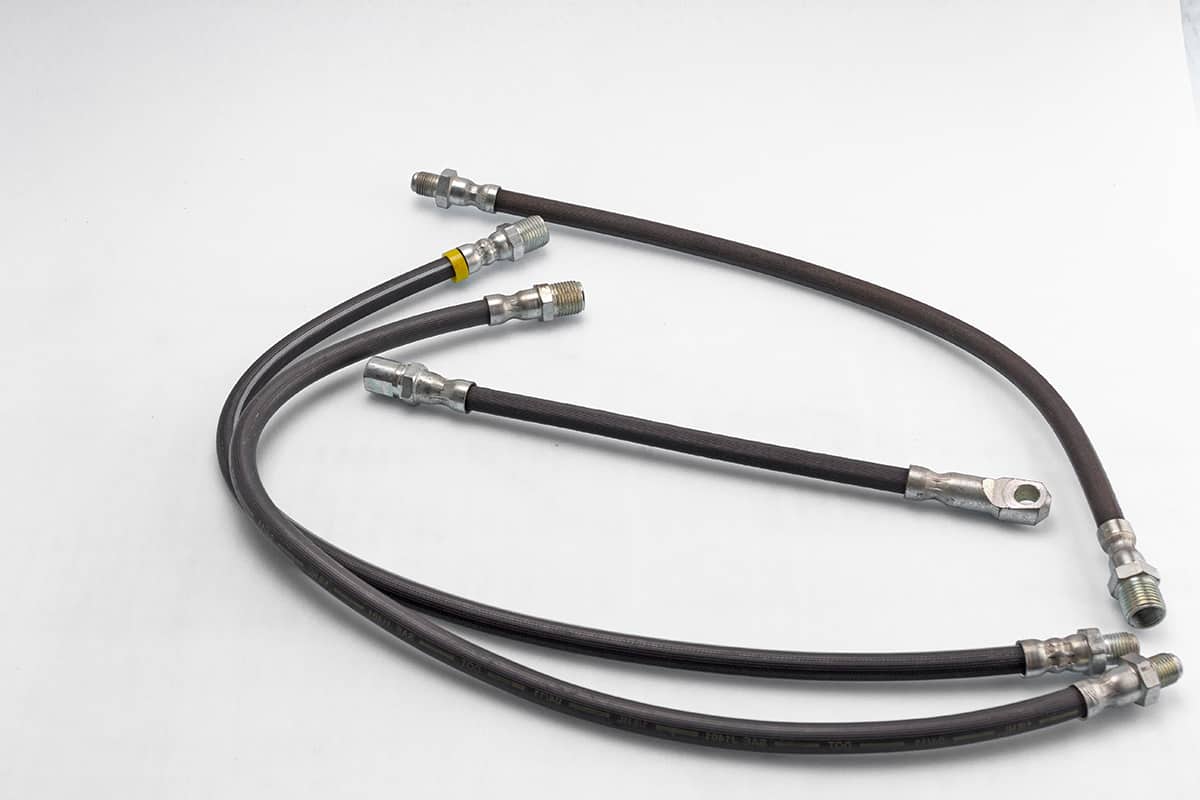
Brake lines are like delivery tubes that carry brake fluid from the master cylinder to the brakes at each wheel. They need to be strong and flexible to handle the high pressure of the fluid and the movement of the car. Brake lines are usually made of steel or other sturdy materials and are sometimes covered with a rubber hose for flexibility.
Understanding how brake lines work can help you appreciate the importance of their role in vehicle safety.
- Press the brake pedal: When you press the brake pedal, it pushes a rod into the master cylinder.
- The master cylinder activates: The rod presses a piston in the master cylinder, which then pushes brake fluid into the brake lines.
- Fluid travels down the brake lines: The brake fluid, under pressure, travels down the brake lines towards the brakes at each wheel.
- Brakes engage: When the fluid reaches the brakes, it pushes against another piston that moves the brake pads against the brake rotor. This friction slows or stops the vehicle.
- Release the brake pedal: When you let go of the brake pedal, the pistons in the master cylinder and the brakes retract, which pulls the brake fluid back into the master cylinder.
Identifying Damaged Brake Lines
Brake lines can wear out or get damaged over time. In this section, we’ll learn about the various signs of damaged or failing brake lines.
Visual signs of damaged brake lines
Your eyes are your first line of defense when it comes to spotting brake line damage. Here are some things to check:
- Brake fluid leaks: Brake fluid is a clear or light brown liquid that might be dripping near your tires or pooling under your car. It feels oily to the touch. If you see this, it’s a sign your brake lines might be leaking.
- Damaged lines: Brake lines should be smooth and straight. If you see any cracks, holes, or rust, that’s a sign of damage. Also, look for any kinks or bulges, which could mean the line is about to fail.
- Wet or dirty lines: Brake fluid can attract dirt. If your brake lines look unusually dirty or wet, it might mean they’re leaking fluid.
How damaged brake lines affect driving
Brake lines in bad shape can make your car behave differently. Pay attention to these signs when you’re driving:
- Soft brake pedal: If the brake pedal feels soft or spongy when you press it, or if it sinks all the way to the floor, that could mean there’s not enough brake fluid in the system, possibly due to a leak.
- Poor braking performance: If your car takes longer to stop than usual or if it pulls to one side when you brake, that could be a sign of brake line problems.
- ABS light or brake warning light: Your car’s dashboard has warning lights to alert you to problems. If the ABS (Anti-lock Braking System) light or the brake warning light comes on, get your brakes checked.
The sounds and smells of brake line trouble
Your ears and nose can also help you spot brake line issues. Here’s what to look for:
- Screeching or grinding noises: If you hear these sounds when you brake, it might mean your brake lines are leaking and the brakes aren’t getting enough fluid.
- Burning smell: A burning smell when you brake could mean the brake fluid is leaking onto hot parts of your car, like the engine or the wheels.
Causes of Brake Line Failure
Brake line failure can happen for several reasons. Here are some of the most common ones:
- Corrosion: This is when the metal in the brake lines rusts or wears away. It can happen because of water in the brake fluid or from road salt in areas with cold winters.
- Physical damage: Brake lines can get damaged from things like car accidents, hitting a pothole, or debris on the road. Physical damage can cause leaks, kinks, or blockages in the brake lines.
- Wear and tear: High temperatures from the engine and brakes, along with the pressure from the brake fluid, can weaken the brake lines over time, leading to failure.
- Poor installation: For example, they might be installed too close to moving parts, causing them to rub and wear out, or they might not be secured properly, leading to kinks or damage.
- Extreme weather: Brake fluid can thicken in extreme cold. High temperatures from the engine, brakes, or hot weather can make the brake fluid expand (PDF), putting extra pressure on the brake lines.
- Dirt and debris: If you often drive on dirt or gravel roads, small rocks and debris can hit the brake lines and cause damage. Dirt can also get into the brake system and cause blockages.
Managing Brake Line Damage
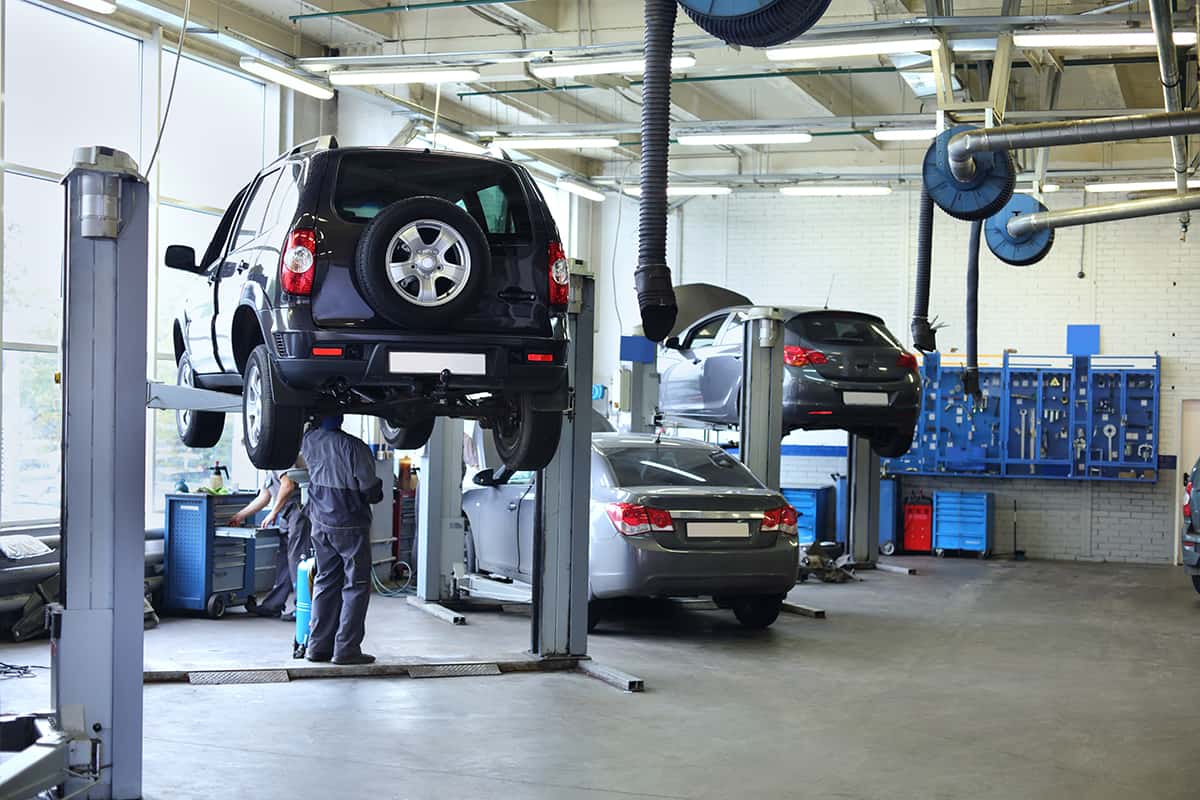
Even with the best care, brake lines can still get damaged. But don’t worry; there are things you can do to manage and fix the damage.
What to do if you suspect brake line damage
If you think your brake lines might be damaged, here are some steps you should follow:
- Stop driving: If your car isn’t stopping properly or if the brake pedal feels different, stop driving as soon as it’s safe to do so. Brake line damage can make it hard or impossible to stop, which is very dangerous.
- Get your car checked: Take your car to a mechanic or brake specialist as soon as possible. They can check your brake lines and other parts of the brake system for damage.
- Fix any damage: If the mechanic finds damage, get it fixed right away. This might involve replacing the brake lines or other parts of the brake system.
A step-by-step guide to replacing brake lines yourself
Replacing brake lines is a relatively straightforward process. We’ll describe how it’s done below, but if you feel confident in your mechanic abilities, you should leave the task to the pros.
- Safety first: Park your vehicle on a flat surface, engage the parking brake, and disconnect the battery. Safety is always paramount when working on your vehicle.
- Locate the brake lines: Identify the brake lines running from your master cylinder to each wheel. They usually run along the frame of the vehicle.
- Remove old brake lines: Use a flare nut wrench to disconnect the old brake lines at both ends. Catch any brake fluid in a container to prevent spills. Be careful not to damage the connectors on the master cylinder or the brake calipers.
- Measure and prepare new lines: Measure the length of the old brake lines to know the length of the new ones you’ll need. If necessary, you can bend the new lines to match the shape of the old ones using a brake line bender.
- Install new brake lines: Connect one end of the new brake line to the master cylinder and the other to the brake caliper or wheel cylinder. Ensure the fittings are tight but do not over tighten as this can damage the new lines.
- Bleed the brake system: You can do this by having a helper press the brake pedal while you open and close the bleed valve on each brake caliper. Start with the brake furthest from the master cylinder and work your way closer.
- Check for leaks: Once all the air is out of the system, check all connections for leaks. Tighten any fittings as necessary.
- Test your brakes: Reconnect your battery and start your car. With the car still in park, press the brake pedal a few times. It should feel firm, not spongy. Test your brakes at a slow speed to make sure they’re working correctly before driving normally.
